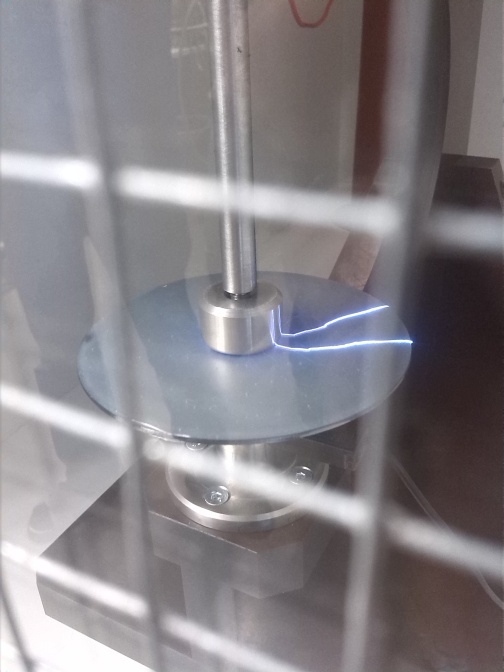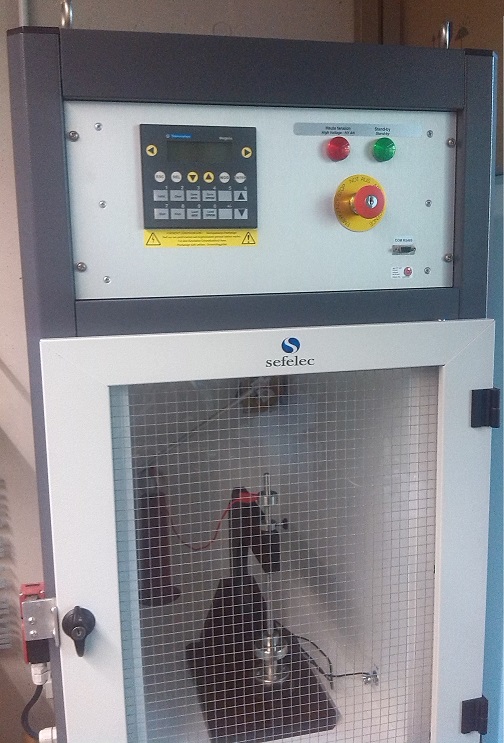To determine the dielectric strength, plastics are usually exposed to rising electric voltage. With increasing voltage, the electric current at first rises proportional to the voltage and then, in the end, rises disproportionate. When reaching the breakdown voltage Ud , an electric discharge in form of an electric arc or sparks occurs. As a result, the electric conductivity of the insulator permanently increases by several orders of magnitude. The dielectric strength Ed is determined by the measured breakdown voltage Ud and the thickness d of the test specimen:
Ed = Ud / d
The measured breakdown voltage or dielectric strength are dependent on the test parameters and environmental conditions.
The rate of voltage increase, for example, has an influence on the breakdown voltage. A rise in temperature should be avoided, as this can lead to an apparently/seemingly lower breakdown voltage (so called thermal breakdown). The duration a material is under high voltage is also relevant for the measurement. The decrease of the dielectric strength by the application of a persistent electrical field is described as “electrical aging”.
Other influencing factors are the structure of the surface and the surface conductivity of the test specimen. If the surface conductivity is disproportionally higher than the conductivity of the test specimen, a short circuit on form of an electric arc can occur along the surface of the test specimen (see picture). This can be prevented by choosing an optimized sample geometry for the specific polymer.
The need to condition the samples before the test and the relative humidity during the high-voltage testing are often underestimated. The water content of the plastic as well as the relative humidity, which can lead to water accumulating on the surface, must be considered and controlled. High-voltage tests at Fraunhofer LBF are carried out under standard climate (23 °C, 50 %rH).
 Fraunhofer Institute for Structural Durability and System Reliability LBF
Fraunhofer Institute for Structural Durability and System Reliability LBF
